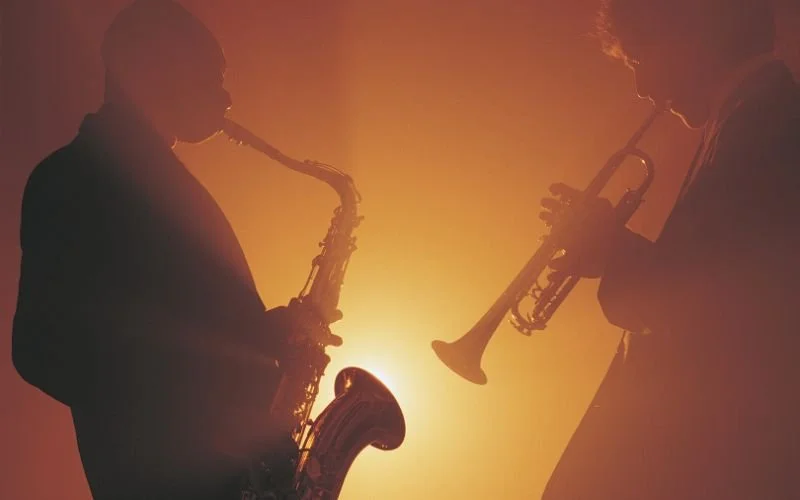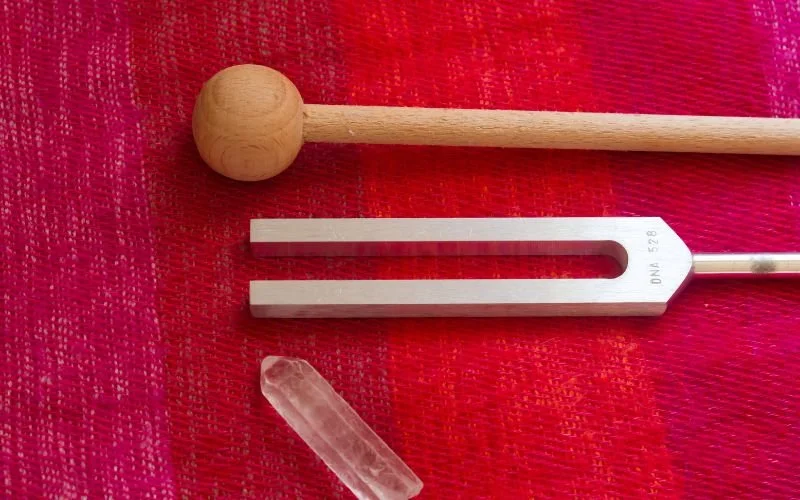Violin playing techniques: how to give style to your performance?
If you've ever shuddered at the sound of a violin solo, it's probably because something touched you... Without you necessarily knowing what. A note that vibrates for a long time, a sound that seems to leap from one string to another, or that strange impression that the instrument is literally singing.
This "something" is the playing techniques: a palette of gestures and effects that the violinist uses to transform each note into emotion. And behind each technique lies a choice, an intention, a way of making the instrument speak.
From "detached" to "spiccato", from vibrato to double strings, an overview of violin playing techniques.
Basic techniques: the violinist's ABCs
Before virtuoso flights of fancy and stylistic effects, every violinist begins with the fundamentals of bow playing. And contrary to popular belief, these "basic techniques" are far from monotonous. Properly mastered, they can be used to express softness, contrast, tension or simply a lovely, flowing phrased .
Playing the violin: our tips for good positioning
Detached: the solid base
This is the most natural gesture on the violin: one bow stroke for each note, with clear articulation. No linking, no stylistic effects. Just a beautiful, well-placed note. It's used everywhere, in every style, and yet the détaché can be very expressive: it all depends on bow speed, pressure and attack. You can make it mellow, dry, nervous or singing. A bit like saying the same sentence with different intonations.
Legato: making the bow sing
In contrast, legato means linking several notes in a single, uninterrupted bowing movement. The sound becomes fluid, almost liquid. There's less breathing between notes, and everything flows together in the same breath. It's ideal for melodic passages, long expressive phrases and slightly lyrical moments.
Staccato: notes that click
Here, we play short, detached notes, sometimes very short, often energetic. This can be done in detached (one bow stroke per note), or "staccato d'un coup" (several notes picked in a single movement). The result is a strong, almost percussive rhythmic effect. It's lively, nervous and bouncy. Perfect for livening up a passage that's a little too sedate.
It is often played in detached form, but some passages require a staccato chained in a single bow stroke (more technical). This is an excellent way to work on bow precision and control.
The porter (or louré): between two worlds
Carrying is a bit like legato, but with more relief. Several notes are played in a single bow stroke, but each note is pressed lightly, as if to detach it without cutting it off completely. It's supple, expressive and, above all, very singing. This style of playing is often heard in Romantic works: it gives the impression that the violin is breathing with the music.
Just starting out on the violin? Follow our advice on choosing the right instrument
You play in a band or orchestra? Share your annotated scores with your partners thanks to Newzik. No need to send blurry photos of your bow strokes.
Double strings and chords: a violin that plays in stereo
The violin is often perceived as a monodic instrument: a single melodic line, a single voice. But it can also play two notes at the same time, or even more, by sounding several strings at once. This opens up a whole new dimension of sound: richer, fuller, sometimes downright spectacular.
Double strings: the art of layering
Playing two strings at once is called double-stringing. It's not so simple: you have to angle the bow just right to rub two strings at the same time. But once you've mastered the technique, the violin begins to speak "in stereo".
In a melodic passage, you can play the melody on one string while simultaneously sounding another note, often a held or repeated note, to create an impression of harmony. This technique is widely used in Bach's sonatas and partitas for solo violin, as well as in the Romantic and folk repertoires.
Tip: when working on a double-string passage, remember to check your bow inclination. 1 or 2 mm too much, and you're playing a string too much or too little. Aim for balance, not force.
Chords: like a mini one-person orchestra
Taking this a step further, we arrive at three- or four-tone chords. Here, it's impossible to make them sound perfectly at the same time (the violin has its physical limits), but they can be made to resonate by "arpeggiating" them, i.e. by sweeping the strings successively, very rapidly. The result: an impression of a completechord , like an organ or harp echo.
Chords give power, solemnity or, on the contrary, rhythmic density. They mark points of tension, climaxes, or provide a harmonic foundation for a musical phrase.
Expressive and rhythmic effects
In some styles, double strings are also used as rhythmic accompaniment. For example, in traditional music (Irish, Gypsy, Scandinavian...), drones or "grooves" are sometimes played on two strings to accompany a lively, bouncy melody. This gives the violin a percussive, almost dance-like quality.
Learn to play the violin: how can you teach yourself?
The bow in motion: when it bounces, snaps or surprises
The bow is not just a tool for rubbing strings. It's a real extension of the arm, capable of precise gestures, sometimes subtle, sometimes very physical. And certain techniques literally transform the sound of the violin. The result is a more visual, more acrobatic universe, where every bounce, every snap produces a unique effect.
Spiccato: the controlled rebound
This is undoubtedly one of the best-known techniques after the basics. The spiccato is when the bow bounces naturally off the string, a bit like a ball bouncing on the ground. It's not a forced bounce: you just let it happen, controlling the momentum.
The resulting sound is short, lively and airy. We use it in fast passages, to give relief and rythm. It's also great fun to play: once you find the right balance point, it "bounces" on its own and almost makes you want to dance.
Ricochet: multi-bounce in a single gesture
The ricochet is the waterfall version of the spiccato. You throw the bow and let it bounce several times in a row in a single movement. Like a pebble skipping across water.
This technique is often used in rapid strokes, for dynamic and impressive effects. It can be found in highly virtuosic classical works, but also in some film or contemporary music, where the aim is to create tension or dramatic effect.
Col legno: knocking with wood
Less well known to the general public, but formidably effective: the col legno (literally "with wood"). Here, the strings are no longer rubbed with the hairs, but lightly tapped with the wood of the bow. The result: a dry, percussive, slightly grating sound.
Guaranteed effect in dark or tense music (spoiler: you've probably heard it in suspenseful film soundtracks). There's also a "col legno tratto" variant, where the string is rubbed with wood instead of struck, for an even stranger, ghostly sound.
The left hand: between finesse, emotion and small magical effects
While the bow gives the violin its voice, it's the left hand that determines the words, nuances and intentions. Placed on the fingerboard of the violin, it chooses the pitch of the notes, but it doesn't stop there: it colors, decorates, vibrates. In short, it transforms a simple sequence of sounds into a veritable musical language.
And certain left-hand techniques are real expressive assets, sometimes almost theatrical. Here are a few you should know (and enjoy listening to):
Vibrato: the soul of sound
It's impossible to talk about the violin without mentioning vibrato. This little oscillating movement of the finger on the string creates a continuous vibration and adds depth to the sound.
Vibrato can't be learned overnight, but it's one of the first expressive techniques you can incorporate into your playing. There are many ways to practice it: wide or tight, fast or slow, depending on the emotion you wish to convey. Vibrato gives the sound of the violin its warmth and vibrant intensity. Without vibrato, a note can sound cold or dry.
Did you know?
Vibrato wasn't always used! Before the 19th century, violinists used it sparingly, only to underline an emotion. Today, it's almost a reflex.
The glissando: sliding emotion
Imagine a note that doesn't follow the other one, but joins it by gliding. That's what glissando is all about: moving from one note to the next without lifting a finger, and letting the listener hear everything in between.
Used with finesse, it's a highly expressive effect. It can evoke tenderness, sensuality, drama, even humor (in some cartoonish cases). In jazz or film music, it's a must. On a violin, the glissando becomes a true emotional gesture.
The trill: ornament and tension
The trill is a very rapid alternation between two adjacent notes. It's played with two fingers that take rapid turns, almost trembling.
It's a classic ornament, but it can also create tension, excitement or suspense. A well-placed trill in a solo is like a musical heartbeat.
Left-handed pizzicato: a little sleight of hand
The classic pizzicato (plucking the strings with the right hand) is well known. But there's also a rarer version: left-hand pizzicato.
Here, while the bow is playing or the right hand is busy... a finger of the left hand quickly plucks a string to create an unexpected little "plop". It's fast, percussive and very visual. We sometimes see it in contemporary or virtuoso pieces such as those by Paganini.
Need to work on a specific technique?
With Newzik, you can loop a passage, slow down the tempo without changing the pitch, and annotate directly on your digital sheet music. Handy for isolating a temperamental spiccato!
Special sounds: the violin becomes an illusionist
The violin is an instrument full of surprises. Sometimes it doesn't really sound like a violin at all: it whispers, squeaks, floats in the treble like a ghost... And that's thanks to a handful of special techniques, which literally transform its sound matter.
These "unusual" sounds are often used to create a mood, evoke a specific emotion, or simply attract the ear in a different way. Here's a look at some of the most striking:
Harmonics: the magic of crystal
Natural harmonics are those airy, almost ethereal sounds obtained by placing the finger very lightly on a precise point on the string (instead of pressing it down as usual).
As a result, the string vibrates differently, producing a higher-pitched, purer, slightly unreal sound. It's crystalline, luminous, almost celestial. Perfect for a dreamlike passage or a suspended atmosphere.
There are also artificial harmonics, which are more complex to produce, but give even greater control over pitch. Very impressive in concert, but above all very poetic to the ear.
Sul ponticello: playing on the edge of mystery
Sul ponticello is a technique that involves playing very close to the bridge (the wooden part that holds the strings). The sound then becomes more metallic, more grating, with strange harmonics interfering with the note.
It's tense, disquieting, almost aggressive. It's often heard in film music to create suspense or anxiety, but also in contemporary or experimental music. It's as if the violin were speaking through a scrambled radio.
Sul tasto: playing in velvet
Sul tasto, on the other hand, involves playing close to the fingerboard, where the fingers lay down the notes. Here, the sound becomes very soft, almost fuzzy, like a warm breath.
It's a perfect technique for softening a phrase, suggesting nostalgia or intimacy. In some pieces, the passage in sul tasto is so subtle that you don't notice it, but you feel it.
💡 Want to convey a strong emotion? Combine legato + vibrato + sul tasto: it gives a soft, intimate, almost whispered sound. Try it out on a slow melodic phrase.
One violin, a thousand styles: the chameleon of strings
The violin is often associated with classical music, the great concertos and symphony orchestras. But in reality, it's an instrument that travels well, adapting to a multitude of styles, cultures and energies. And what changes from one style to another is not just the pieces played: it's also the playing techniques.
Every style has its little secrets, its habits, its liberties. And that's what makes the violin so lively and versatile.
🎻 Classique: precision at the service of expression
In classical music, techniques are codified, taught and, at times, meticulously perfected. Interpretation is all about details: the finesse of vibrato, the quality of legato, the lightness of spiccato. But this is not coldness: it's mastery at the service of emotion, with great freedom within the rules.
Classical musicians use the full range of techniques mentioned above, often in the same piece.
🎻 Jazz: freedom, swing and glissando at will
In jazz, the violin lets loose. There are no strict scores here, just improvisation, personal phrased and expressive glissandos. Vibrato becomes wide, rhythms syncopated, and playing is often more percussive.
Some violinists even use techniques borrowed from the guitar or trumpet, imitating the inflections of voices or other instruments. The violin becomes an expressive, groovy solo instrument.
🎻 Trad / folk: raw energy and percussive play
In traditional music (Irish, Gypsy, Scandinavian, Quebecois...) the violin (often called "fiddle") becomes an instrument of dance, celebration and history.
The playing is often fast, rhythmic and deeply rooted, with lots of double strings, drones and typical ornaments (such as mordents and slides). The bow is used in a very specific way, almost like a percussion instrument.
And above all: here, expression comes before technique. We play to move people, to make them vibrate, to transmit something alive.
🎻 Pop, rock, contemporary music: effects and amplifiers on the menu
The violin has also found its place in pop, rock and even electro music. Thanks to amplification (and sometimes effects pedals), it can imitate an electric guitar, a doctored voice, or produce unexpected sounds.
Classical techniques are sometimes hijacked: col legno is played like a snare drum, delay is added to harmonics, ultra-long glissandos are made like synth ascents. It's an immense playground for curious, creative violinists.
👇
If you want to go further, listen to Hilary Hahn, Isabelle Faust or Patricia Kopatchinskaja: different styles, but the same sound and playing techniques that give each violin its own personality.
♫ Whether you're a beginner, an experienced violinist or just curious, all these techniques really come to life when you can hear them, see them on a score, and why not, annotate them to your liking.
With Newzik, you can :
import and digitize your sheet music scores,
annotate your bow strokes, spiccato or sul ponticello passages,
listen to your tracks with synchronized audio,
and even create your own digital interpretations.
It's the ideal tool for exploring playing nuances and working on your expressivity. Test Newzik for free!









